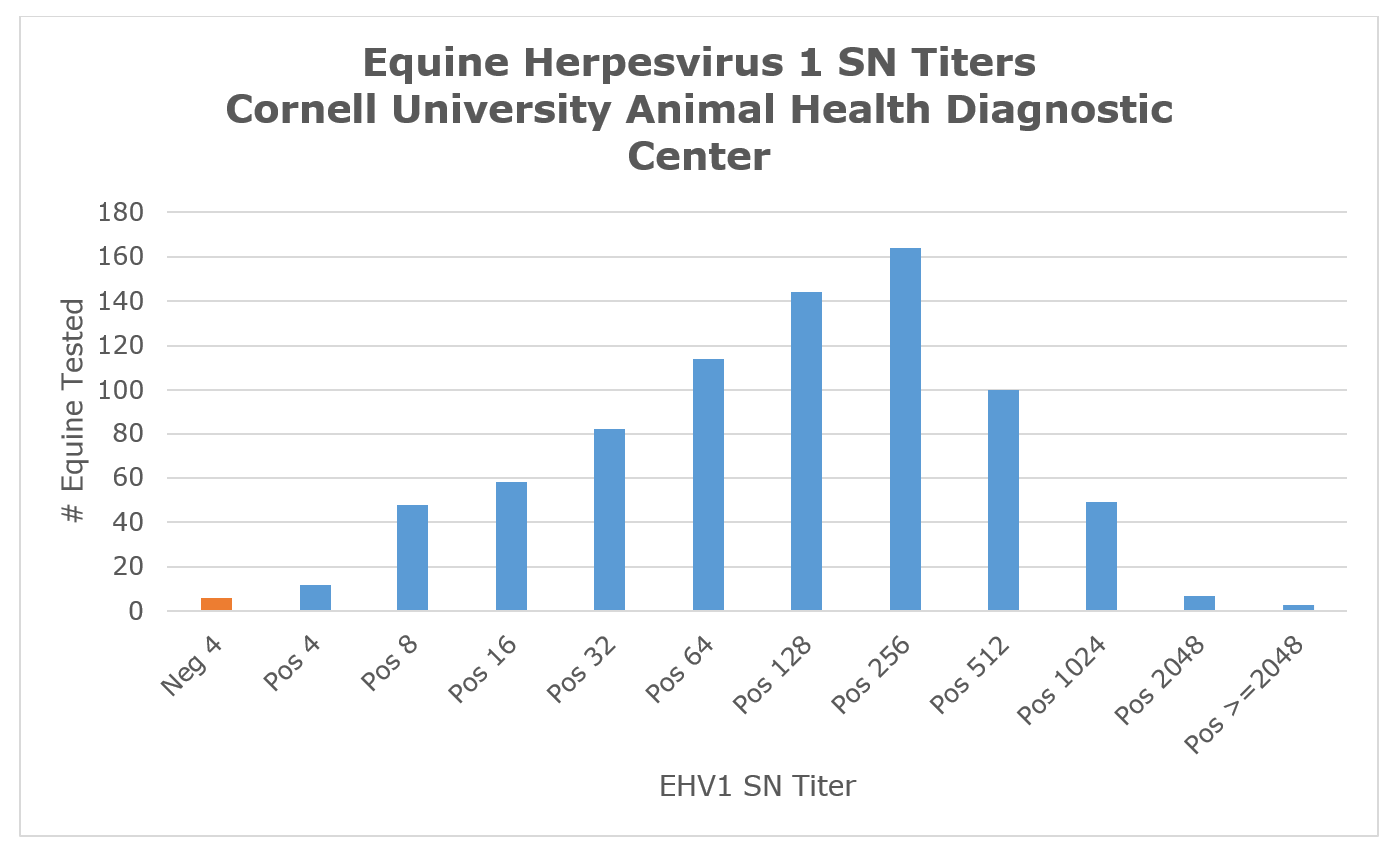Equine Herpesvirus 1 (EHV-1) Serum Neutralization
Equine herpesvirus 1 or Equid alphaherpesvirus 1 is in the order Herpesvirales, family Herpesviridae, subfamily Alphaherpesvirinae, genus Varicellovirus. As a typical alphaherpesvirus, it shares many of the properties common to this group of viruses such as canine herpesvirus, bovine herpesvirus 1, and feline herpesvirus. As such, many acute infections are subclinical and the virus establishes latency in the host for the life of the animal. Virus can recrudesce at unpredictable intervals in many instances with no overt signs and infectious virus may be shed. It is through this mechanism enables the virus to spread and persist in the equine population.
EHV-1 is found associated with three distinctly different clinical syndromes:
- In young naïve horses, the acute infection may simply present as a mild upper respiratory infection. Barring complications, this initial contact with the virus may go unnoticed.
- For pregnant mares, an active EHV-1 infection has a high probability of inducing an abortion particularly in horses that have never been previously infected with the virus or never vaccinated. The immune response to a prior exposure to EHV-1 may not be protective in all instances, thus the need for appropriate vaccination protocols.
- The third clinical syndrome is the development of neurological signs associated with an active EHV-1 infection. This syndrome is called equine herpes myeloencephalopathy (EHM) and its diagnosis often triggers state enforced quarantines. In a high per cent of cases, a variant of EHV-1 (neuropathogenic (np) EHV-1) is found, but the linkage between an np EHV-1 infection and EHM is not 100% - closer to 75% - so any active EHV-1 infection may now trigger a period of quarantine for the index case and contacts. Specific vaccine protocols have not been established to prevent this unique clinical syndrome.
The chart below reports on serum neutralization tests performed on over 700 samples submitted to the AHDC. The interpretation of these values is complicated by the fact that equine herpesvirus 4 (EHV-4) strongly cross-reacts with EHV-1 (and possibly EHV-9). Currently there are no serological tests that can definitively identify an antibody response as being only EHV-1 or EHV-4. To complicate matters even more, there are vaccines available for both of these viruses. In young foals with no exposure to EHV-1 and vaccinated with EHV-4, a 4-8 fold higher titer to EHV-4 than EHV-1 may be seen, as an EHV-1 SN titer is evoked with an EHV-4 vaccine. In older horses, the differences in antibody titers seen using the two viruses in the testing are not significantly different in most cases. As a guideline, when values exceed Pos 256, we become more concerned about a possible EHV-1 infection. Titers < Pos 256 can be found in early initial acute infections, vaccinated horses, or horses previously infected with EHV-1 (or EHV-4). NOTE: Antibody titers at the AHDC are reported as the reciprocal of the highest dilution capable of completely inhibiting/blocking EHV-1 infection/replication (at the 100% endpoint, e.g., 1:64 = Pos 64).



